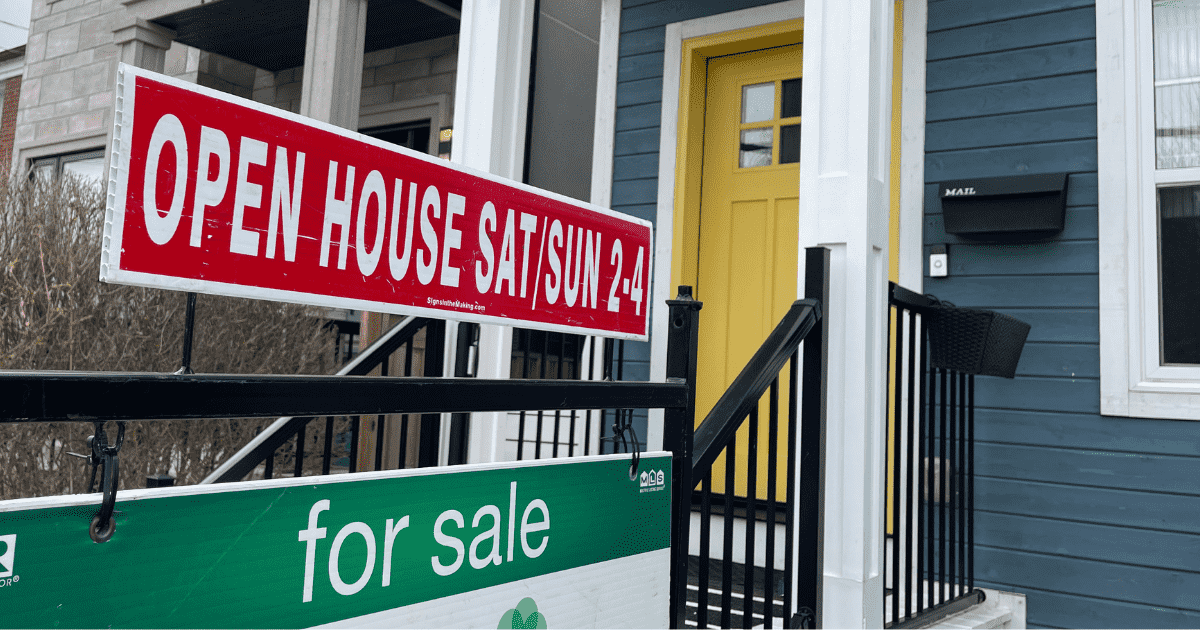Canada’s post-secondary education system is globally recognized, attracting students from around the world. However, a severe shortage of student housing threatens this success, posing a broader socioeconomic challenge that demands urgent action.
The Canadian housing market faces a significant supply and demand imbalance, with over four million homes needed over the next six years to restore affordability.* Other policymakers, such as the Canadian Human Rights Commission, believe this number could be even higher. Rising government charges and insufficient construction capacity have exacerbated this crisis.
Without positive government intervention and policy adjustments — such as the recently introduced HST exemptions on rental housing — amid the currently challenged financial environment, the lack of housing starts witnessed in the past two years will persist, particularly in university cities and towns where demand for all housing is exceptionally high.
The magnitude of the student housing shortfall
Canada is experiencing an unprecedented shortfall in student housing, with a deficit of over 400,000 beds nationwide.** This shortage is particularly acute in the country’s 20 largest university markets, which host approximately 1.5 million post-secondary students but offer only around 170,000 beds.*** The result? An overwhelming majority of students are forced to compete for already limited and expensive rental housing, exacerbating the housing crisis in local communities.
In university towns like Guelph, Ontario, the housing shortage is particularly severe, reflecting a broader trend across many such communities. The strain on local rental markets, driven by insufficient student housing, has led to rising rents and forced many, including students, into substandard or overcrowded accommodations. Compounding this issue, the provincial tuition freeze mandate for domestic students has compelled universities to increase international student intake to cover rising costs, further straining the housing supply.
The role of purpose-built student accommodations
Purpose-built student accommodations (PBSAs) offer a viable solution to this crisis. Unlike traditional rental units, PBSAs are specifically designed to meet the unique needs of students, providing them with safe, affordable and community-oriented living spaces.
Countries like the United Kingdom and the United States have successfully implemented PBSAs at scale, significantly alleviating housing pressures on students and local communities alike. Off-campus PBSA accounts for 60 per cent in the U.S., 58 per cent in the U.K. and 69 per cent in Australia, but only 29 per cent in Canada.**** The PBSA market in Canada remains underdeveloped.
To close the gap, we must incentivize the development of PBSAs through policy changes, financial support and streamlined regulatory processes. The recent introduction of PBSA in the Government of Canada’s Affordable Housing Fund, which aims to provide low-interest loans for new affordable housing projects, is a step in the right direction, though details have yet to be released. Still, more needs to be done given PBSAs are essential to drive affordable housing and economic growth, by alleviating existing housing stock that can be made available to the general non-student population.
Student housing in Ontario amid ongoing municipal approval challenges
Bill 185 in Ontario is a significant development for expediting approvals in the student housing sector. This legislation has enabled Forum Asset Management to unlock approximately 1,100 units across projects in Guelph and Toronto, providing University of Guelph and York University students with high-quality, community-focused housing.
However, despite the progress made by Bill 185, developers continue to face headwinds, from continually escalating development charges (which in Toronto, according to data from Scotiabank, have increased by 2,000 per cent over 20 years) to higher construction and financing costs.
The way forward: Collaborative efforts and policy reform
The Canadian student housing crisis cannot be solved by developers alone. It requires a combined effort from all stakeholders, including government agencies, educational institutions and the private sector. Key policy changes, such as the inclusion of PBSA in the definition of affordable housing (which would create development charge exemptions) and the adoption of policies similar to Bill 185 across other provinces, are essential to unlocking the potential of this sector.
Additionally, property tax exemptions for student housing catering to specific university student bases, both on and off-campus, should be created. These exemptions could play a pivotal role in supporting universities’ broader educational and community missions, regardless of whether the housing is university-owned or operated by the private sector.
By lowering the operational costs for student housing providers, such exemptions could directly translate into lower rents for students. This is particularly critical as students often face significant financial pressures, including the burden of repaying student loans upon graduation. Alleviating financial strain allows students to focus more on education and well-being, and less on the economic challenges associated with finding suitable housing.*****
Moreover, universities must take a more active role in facilitating the development of PBSAs on or near their campuses. The QUAD at York University is an example of what can be achieved when public and private entities work together toward a common goal.
Canada’s housing crisis is multifaceted and impacts all Canadians as well as international students. By adopting supportive policies, we can create more PBSA, which delivers a “two birds, one stone” approach by freeing up traditional housing while providing students with the safe, affordable housing they deserve.
Successful projects such as ALMA @ Guelph and The QUAD at York University offer a blueprint for creating vibrant communities that benefit both students and the broader population. Crucially, these projects require experienced developers who understand the unique needs of students, as PBSAs are far more than just conventional apartment developments — they’re about building communities that foster social belonging, well-being and positive environments essential to the development of our future leaders.
* Canada Mortgage and Housing Corporation, Housing shortages in Canada, Updating how much housing we need by 2030.
** Forum estimate using data from Bonard, Student Housing Market Canada. November 2023, and Statistics Canada.
*** Bonard, Student Housing Market Canada. November 2023.
**** Canada Mortgage and Housing Corporation, Canada’s Housing Supply Shortages: Estimating what is needed to solve Canada’s housing affordability crisis by 2030.
***** Simplydbs. Student Housing Index Survey. Student housing and youth mental health: Survey finds strong correlation.

As Managing Partner, Real Estate at Forum Asset Management, Aly leads Forum’s largest business. This includes a $2B+ development pipeline with over 3,000 units of student housing and multi-family apartments, as well as Forum’s flagship fund the Forum Real Estate Income and Impact Fund (REIIF), valued at over $650M and holds over 2,000 rental housing units including appx. 2,500 student housing beds. Before joining Forum, Aly served as the Executive Vice President of Investments & Asset Management at Hullmark, a private urban real estate investor and developer in Downtown Toronto and was instrumental in the firm’s AUM growth by 15x to $1B in 7 years. During his tenure, Aly led partnership formations with Sun Life Investment Management, First Capital REIT and OCAD University.
Over the course of his career, Aly has developed experience in all major real estate asset classes and has been involved with principal investments valued at more than $4.5 billion. He has also led a variety of functions including investments, development, asset management and operations. In addition to his professional experience, Aly has been involved in a number of board positions and advocacy roles. He was the President of the NAIOP Greater Toronto Chapter in 2022, one of the commercial real estate industry’s largest advocacy groups, and served as a board member for 6 years. Aly currently serves as a member of OCAD University’s Board of Governors, Physical Resources and Capital Assets Committee (“PRCAC”) and the Joint Board and Senate Liaison subcommittee.














